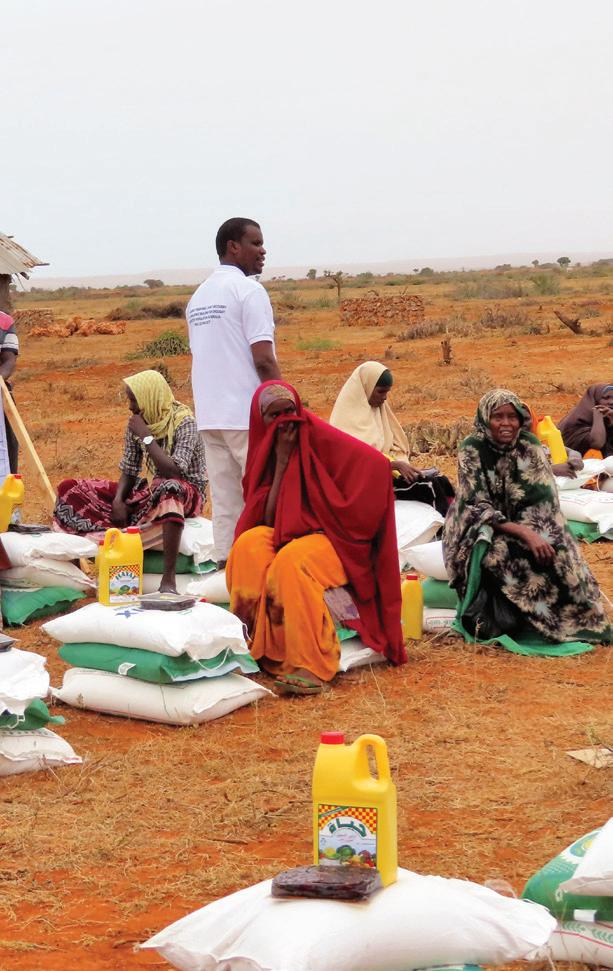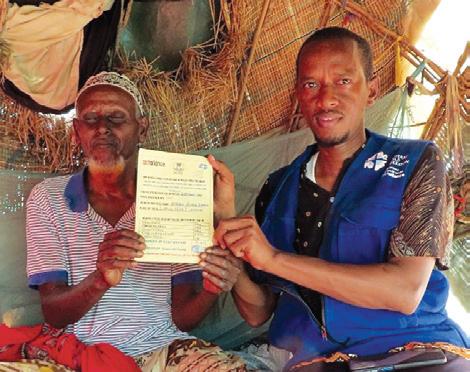
1 minute read
Food to fight famine
Five years of drought in the Horn of Africa threatens famine in Ethiopia, Somalia and Kenya.
It’s estimated one person dies of hunger every 48 seconds in this region.
Advertisement
Abdullahi Hassan Ahmed is a 66-year-old father of six. The drought killed 60 of the family cows and 2 donkeys, and forced Mr Abdullahi’s family to relocate to Luglow IDP camps near Kismayu.
‘‘Priority at the moment is to find food to eat. In the process to find food, we often find ourselves in other serious protection risks such as leaving behind the weak amongst our families, including persons living with disability, children and women.
It’s so heartbreaking for us to be separated from our loved ones.’’
As Mr Abdullahi prays that the skies open up for rain, he says:
Somalia Drought
What Horn and East Africa
Drought Appeal - Somalia
Local Partner LWF – Ethiopia and Somalia
Where Somalia
Who 500 households of 3,000 individuals benefited from food assistance during the severe droughts of 2022.
ALWS Action ALWS: $300,000
EAA: $63,149
Emergency Action Alliance
Total: $363,149
Ethiopia Drought
What Horn and East Africa
Drought Appeal - Ethiopia
Local Partner LWF – Ethiopia

Where Ethiopia
Who 9860 project participants
ALWS Action ALWS: $320,000
EAA: $63,150
Emergency Action Alliance
Total: $383,150
Why our help was needed
The Horn of Africa is facing a severe drought affecting more than 15 million people in Somalia, Kenya, and Ethiopia. The drought is causing food insecurity, lack of access to safe water, education, livelihoods, and protection. Women and children are the most vulnerable, with children at risk of mortality and malnutrition. Animals are also dying due to a lack of water and pasture. The drought is historic in its length and severity.
Our action together
The funding from ALWS is channelled to the drought response in four low land areas in the Oromia Region in Ethiopia to increase access to lifesaving WASH services mainly through water trucking, food and animal feed through cash support, recovery interventions through crop seed provision and capacity building the drought affected communities.





